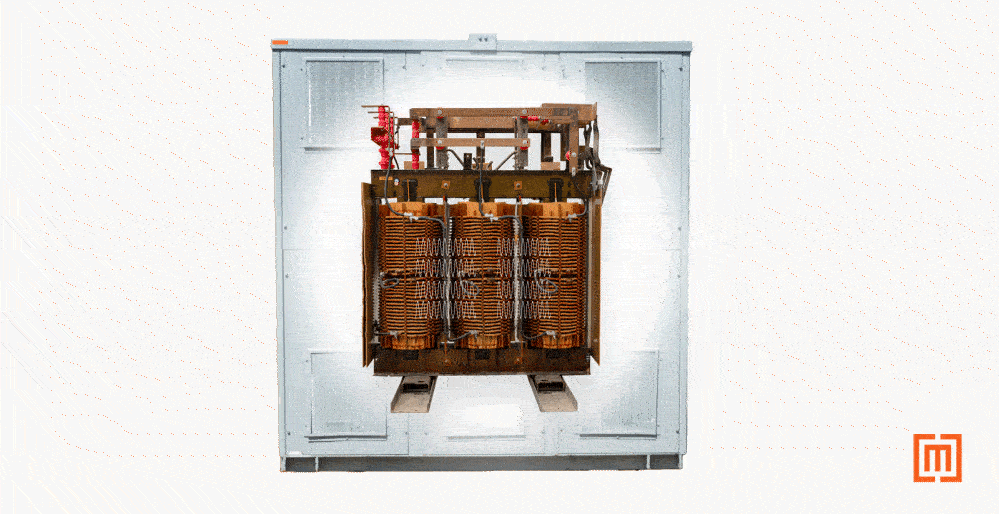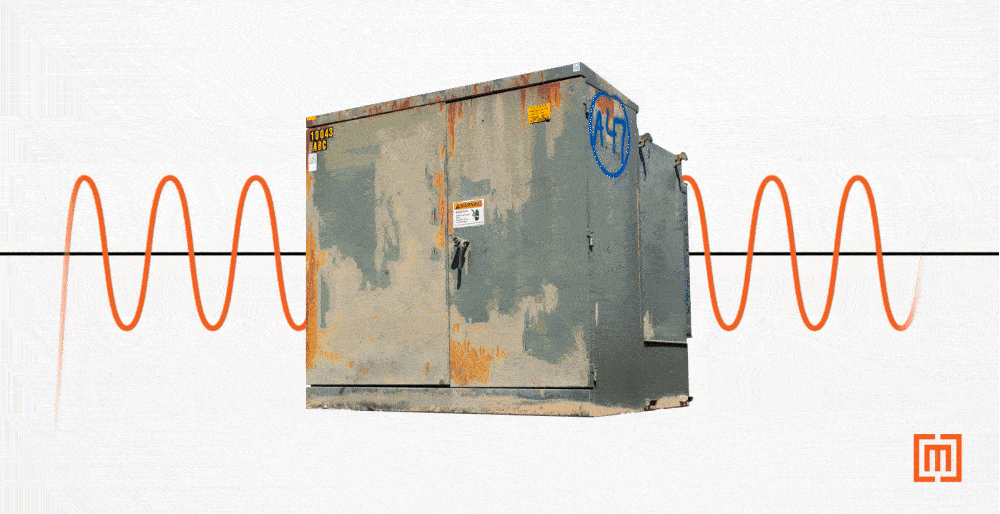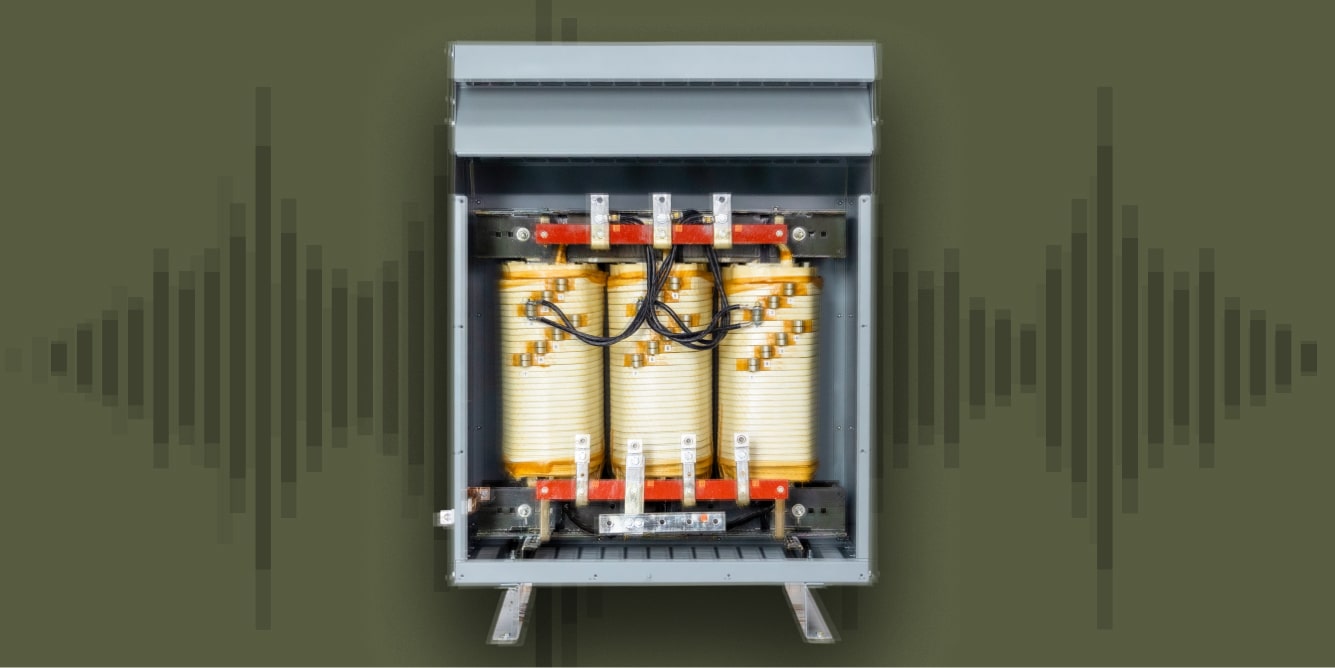Why Transformers Hum
A transformer hum should be low and consistent. Learn the natural causes for a transformer hum as well as noises that may prompt further investigation.
June 16, 2025
How To's
We all have noises we enjoy hearing. The juicy sizzle of a good steak. The rhythm of crashing waves at the beach. The warm crackle of a fire.
When it comes to transformers, we don’t always know how to assess their noises. Electrical transformers make noises for many reasons. Some noises are normal. Some are not. It’s important to know the reasons behind the noises. If your transformer isn’t operating as it should, you need to know why.
Let’s take a quick look at what noises you should and shouldn’t expect from your transformer.
Normal Causes for Transformer Humming
Transformers usually hum for two main reasons: magnetostriction and natural resonance.
Magnetostriction
Magnetostriction is a natural occurrence in transformers. (It’s also a clunky word that we don’t recommend attempting before morning coffee…)
During operation, a magnetic field activates as electrical current flows between the transformer coils. At the same time, the transformer’s metal core expands and contracts, creating a humming sound. This phenomenon is called magnetostriction. Learn more about how transformers work.

The surrounding components of the core also vibrate, adding their noise to the mix. The combined buzzing or droning sound makes up the transformer’s hum. A healthy transformer hum should be low, consistent, and calm.
Natural Resonance
A second reason transformers hum is natural resonance.
We usually connect transformers to some form of structure. Transformers are usually attached to poles, concrete pads, or even contained inside buildings. When the transformer itself vibrates, the attached components will also vibrate. And if everything vibrates at the same frequency, the combined noise will be louder.

This combined consistent hum is also completely normal. Nothing problematic here.
What Is a Normal Transformer Sound?
Transformer noise is normal. In fact, various organizations have published industry standards for transformer noise levels. Take a look at the NEMA and IEEE industry standards for transformer noise.
NEMA Standards for Liquid-Filled Transformers
These are industry sound levels for liquid filled transformers like padmounts, substations, and polemounts.
One thing to keep in mind here: unless otherwise specified, transformer NEMA sound levels are established at no load. This means that if you measure the unit’s sound while the transformer is both energized and under load, you may find the sound louder.
IEEE Standards for Dry-Type Transformers
Here are the IEEE standards for low voltage and medium voltage dry-type transformers.
Ways to Handle Normal Transformer Noise
Even if your transformer produces humming sounds within the standards listed above, the noise can still be a lot to handle. Especially if your transformer is indoors. Below are a few ways to reduce the amount of sound your transformer produces.
Add Walls
You can surround the transformers with thick walls or even put the unit in its own room. Many offices or manufacturing buildings have a dedicated electrical room where they store and protect their equipment. The additional insulation from these walls will reduce the sound you hear.
Adjust the Base
Some types of transformers can sit on anti-vibration pads. These pads create a gap between the transformer and the ground. They also absorb the vibration of the transformer itself. Both of these factors decrease the overall level of sound.

Concerning Transformer Sounds
If your transformer noise exceeds the standards above, or if you hear rattling or buzzing, you should power down the unit and investigate. Depending on the noise, the underlying cause could be something minor, or something more concerning. If you hear something like a weed whacker inside the transformer, it could be a sign of internal arcing.
Let’s take a look at some other common transformer problems below.
Core Saturation
If the hum is louder than usual, it could be that the transformer’s core can no longer handle the magnetic field. An overvoltage or excessive load can overwhelm the core and prohibit magnetization, affecting the overall hum of the transformer.
Transformer Overload
If the transformer is carrying more current than it’s designed to, the core and windings can overheat. These stressors will alter the unit’s vibrations and interrupt the consistent transformer hum.
Loose Components or Mounting
Loose components or loose mountings can cause inconsistent or loud transformer humming. You’ll want to inspect these as part of your routine transformer maintenance.
Wear and Tear
The transformer’s integrity can decrease over time due to usual wear and tear. This could make your transformer’s hum louder and inconsistent.

Conclusion
We hope the reasons for transformer sounds are now a little clearer. Understanding transformer noises along with routine transformer maintenance will tell you if a unit should be repaired or replaced.
If you’re unsure of whether a transformer noise is normal, you can always reach out to us. Maddox can tell you what to expect. We can help you investigate anything that doesn’t sound quite right. And we can help you with any needed repairs.
If you have concerns about your transformer’s noise, fill out the form below!












